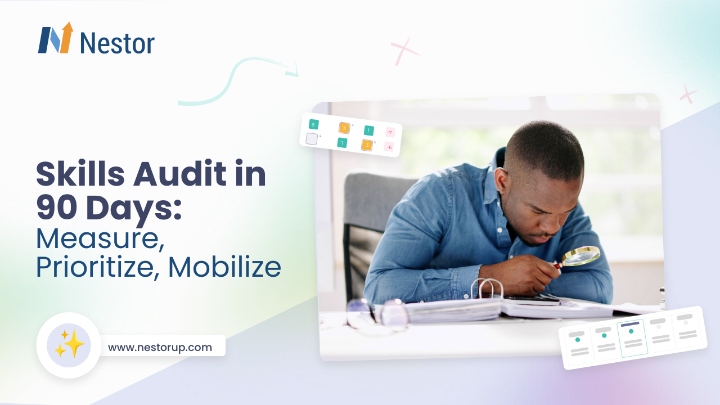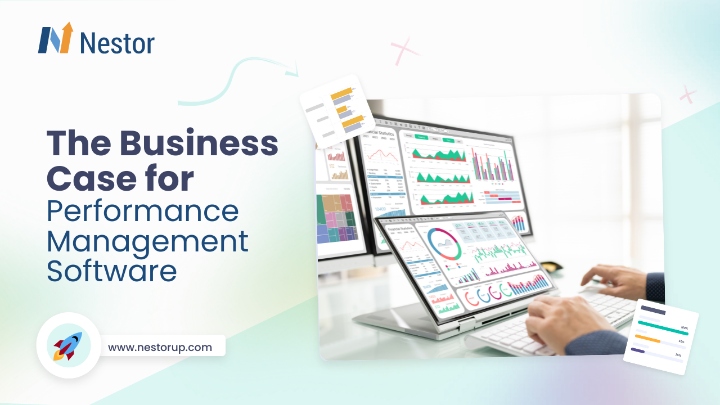
In today’s dynamic business landscape, the importance of skills cannot be overstated. As a significant number of jobs become obsolete every day and we are transitioning from fixed job titles to flexible skills-based roles, skills are emerging as the central point of modern talent strategies. And eye-opening skills statistics prove it.
The problem with jobs is that they evolve very fast under the impact of technology and have a limited capacity to truly reflect the nature of work. By contrast, skills offer a granular view of workforce capabilities, empowering organizations to make talent decisions aligned with business priorities.
From the continuous changes in core abilities to bridging skill gaps, embracing a skills-based approach is vital for organizations seeking to stay competitive and relevant. But if we’re talking about the benefits of skills, we’ve barely scratched the surface.
They have the power to reveal new talent pools, enhance career paths, boost productivity and engagement, and ensure better workforce planning. Still not convinced? Let’s have a closer look at:
7 eye-opening skills statistics for businesses and managers
1. Core skills are bound to change in the near future
#1 out of 7 skills statistics: “44% of workers’ core skills are expected to change in the next five years.” – World Economic Forum
Whether it’s due to the rapid pace of innovation in tech or the ever-changing customer expectations and fluctuating markets, one thing is certain: both organizations and their workforces need to become agile and constantly update their capabilities in order to remain competitive and relevant.
And this is no longer a matter of choice but a business imperative. The risk of not taking action early on is significant. As the pace of transformation and changes increases, it will be even harder to catch up with competitors who are more proactive and are preparing today for the challenges of tomorrow. One decision can make or break the long-term future of a company — just ask Nokia or Yahoo, if you don’t believe us — so, when it comes to a transition to skills, the time to act is now.
Moreover, companies cannot afford to maintain employees with obsolete skills, especially since a potential mismatch between skills and the expectations of a job role can influence an employee’s achievements and the company’s overall productivity. Employees who lack the digital or even soft skills necessary to use new tools or to effectively collaborate in remote work environments will lack confidence and need additional time to perform their tasks.
Learn more about skills and the agile workforce model.
2. Skill gaps are a concern for business strategies and outcomes
#2 out of 7 skills statistics: “49% of L&D pros say executives are concerned that employees do not have the right skills to execute business strategy.” – LinkedIn Workplace Learning Report 2022
This is a worrying statistic that shouldn’t be ignored since the capability and performance of employees are directly connected with organizational goals and business outcomes. Any gap in skills (either soft or hard) will limit what companies can do or how well or fast they deliver top-quality products and services.
Not having a proper understanding of the skills and expertise (and gaps) within the company can also lead to a lack of engagement and increased turnover in the long run. And this is why proactive initiatives, like upskilling and reskilling, are so crucial in the process of bridging skill gaps and overcoming talent shortages.
Explore ways to close the skill gaps in your organization.
3. Importance of skills isn’t reflected in business initiatives
#3 out of 7 skills statistics: “Only 26% of employees say their organization challenged them to learn a new skill.” – LinkedIn Workplace Learning Report 2023
Doing challenging and impactful work and having opportunities to grow and develop their skills are among the top 5 factors that determine employees to either stay or leave their company.
Organizations and HR departments that fail to address this deep longing for growth will not only see higher attrition but can also end up with a damaged reputation, especially among Gen Z members, who are more likely to seek other opportunities when their needs and expectations aren’t met.
Learn more about upskilling, its importance, and its benefits.
4. Skill-based initiatives can streamline processes and optimize costs
#4 out of 7 skills statistics: “Organizations that realign HR processes to match skill needs can boost employee engagement by 50 percent, lower training and development program costs by 50 percent, and raise productivity by 40 percent.” – McKinsey & Co.
Switching to a skills-based model has all-around benefits for organizations, like a higher probability to innovate, a more inclusive work environment, and a better capacity to adapt to changes and place talent more effectively. But its most significant impact, as the McKinsey & Co statistic shows is the ability to streamline processes and optimize costs.
Aligning all talent operations around skills also pinpoints the necessity for new learning and development functions that can keep up the pace with the rapidly evolving skills environment. Companies need to rethink the learning experience to ensure it responds to the growth needs of each employee and ultimately drives better outcomes at the individual and organizational levels. And skills are the common element that can align performance, development, and learning and ultimately drive cost optimization.
Learn more about the true power of skills and their role in driving business performance.
5. Workers are aware of the critical nature of skills and skill gaps
#5 out of 7 skills statistics: “54% of employees fear they don’t have the skills they need to thrive in a workforce that emphasizes collaboration using technology.” – Monster
Ongoing changes and the rapid adoption of digitalization can make many employees feel left behind or that they aren’t ready to adapt to new workflows and models. While this situation usually affects the generations that have been in the workforce longer, it’s not always safe to assume that Gen Z is ready simply because they are more familiar with new technologies.
Therefore, assisting your employees with the right learning opportunities that match their needs and help them to continuously develop means high-quality work in less time and effective contribution to the organizational goals.
Discover the fastest-growing digital skills in 2023.
6. Skills-based hiring is quickly becoming the new norm
#6 out of 7 skills statistics: “76% of employers use some skills-based hiring to find new talent, with almost 55% using role-specific skills tests.” – TestGorilla
The concept of skills-based hiring isn’t new. However, it is quickly becoming the default choice for companies that want to attract the right talent for them, especially in a labor market where talent shortage is more and more acute.
The skills-based approach helps companies create new talent pools around more diverse skills, including qualified but overlooked candidates. It also paints a more accurate picture of what you can expect from a certain candidate — especially when compared to traditional diplomas and certificates.
Perhaps the key advantage of a skills-first hiring model is that it ensures equal opportunities in the labor market and surfaces close match employees across industries regardless of college degree requirements or similar certifications.
7. The future of skills and work remains a question mark
#7 out of 7 skills statistics: “Only 26% of respondents strongly agreed they can identify the skills the organization will need in the future due to technological change.” – PwC
While mapping the current skills and gaps in the organization is challenging, identifying abilities and traits that will become imperative in the future is even harder. And the impact isn’t small! Being able to anticipate and proactively respond to future needs is often what makes the difference in the business world.
Let’s look at a current example. Decision-makers are well aware that (generative) AI will have a radical impact on their workforce and business results. So, it’s hardly surprising to see them integrate or test out tools like ChatGPT.
But clearly defining the skills required to make the most out of emerging technologies, like AI, is a challenge. And, as new technological breakthroughs will impact the labor market, organizations need to look at ways of identifying changes in skill needs fast and beginning training programs for their workforce as quickly as possible.
Check out the role of skills management software in the future of HR and talent management.
How Nestor’s skills-based platform can help
We believe in the power of skills and a style of work that allows everyone to thrive while growing based on their own abilities and interests.
Our People Intelligence Platform helps organizations map their current and future skills needs, identify competency gaps, and create a truly agile workforce. And we take it to the next level with employee skills profiles, tailored growth opportunities, and our very own talent marketplace that supports internal mobility and succession planning. All in one easy-to-access-and-use platform.
Ready to unlock the full potential of your workforce? Schedule a free demo to learn more about Nestor’s powerful solutions.










